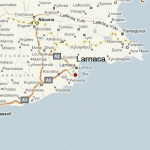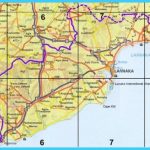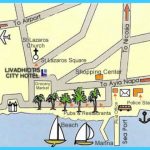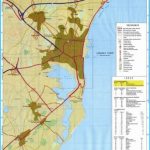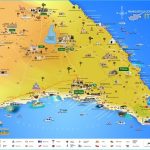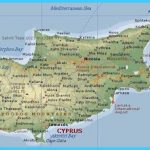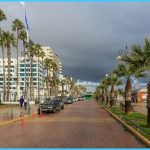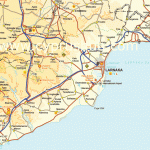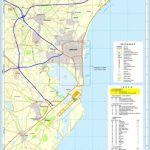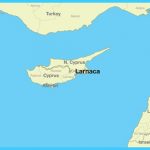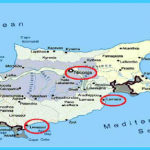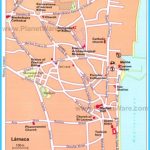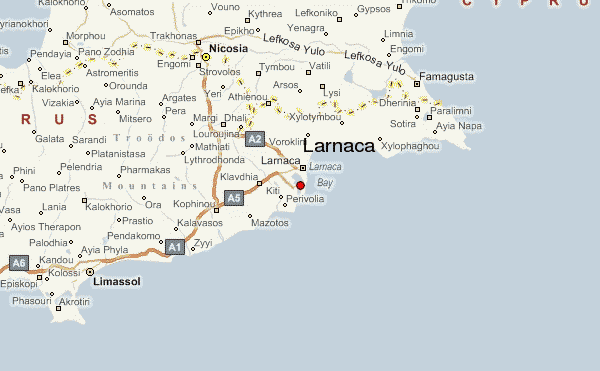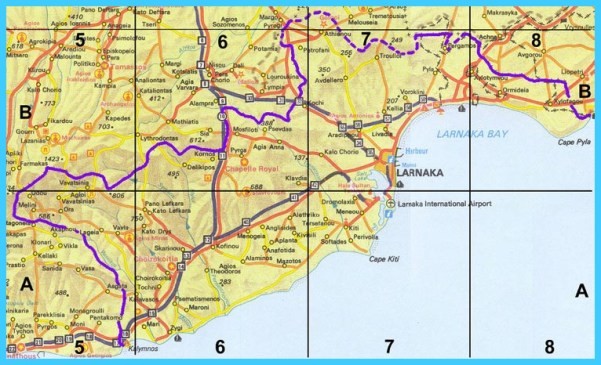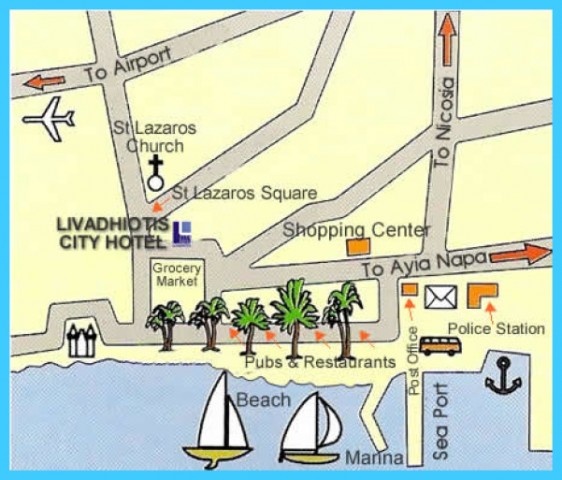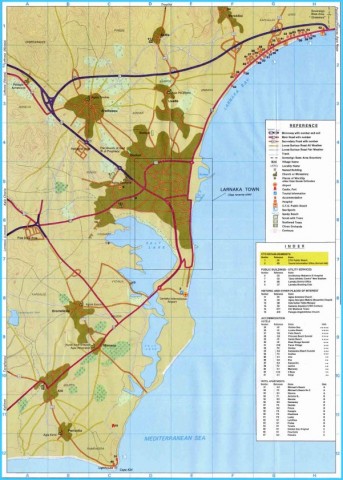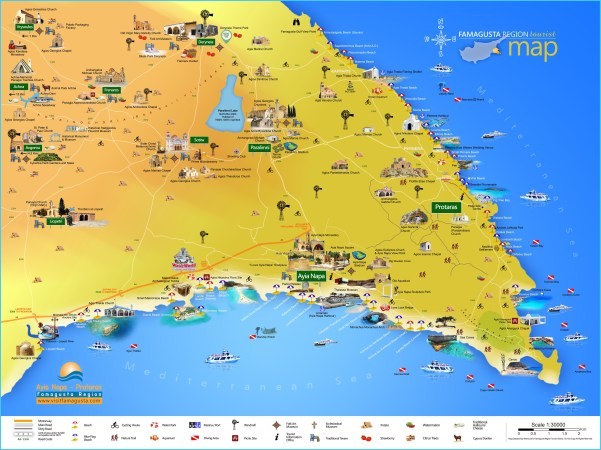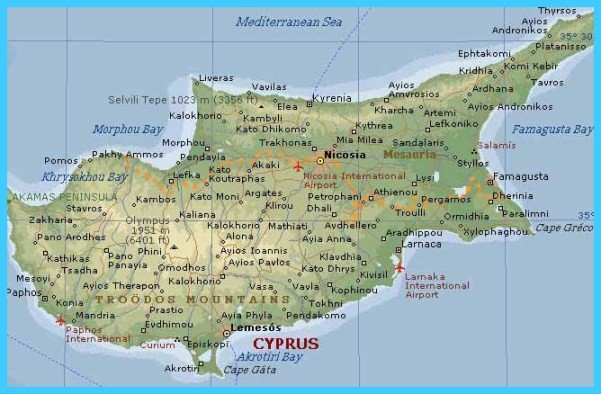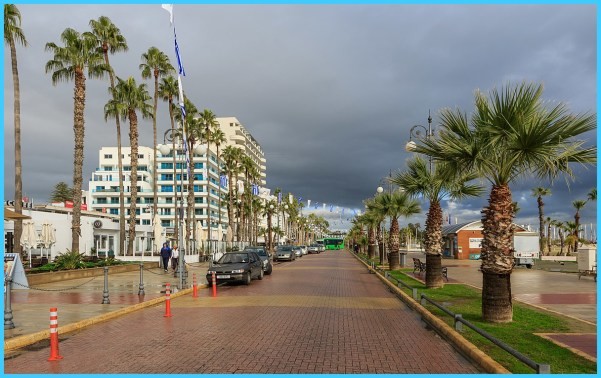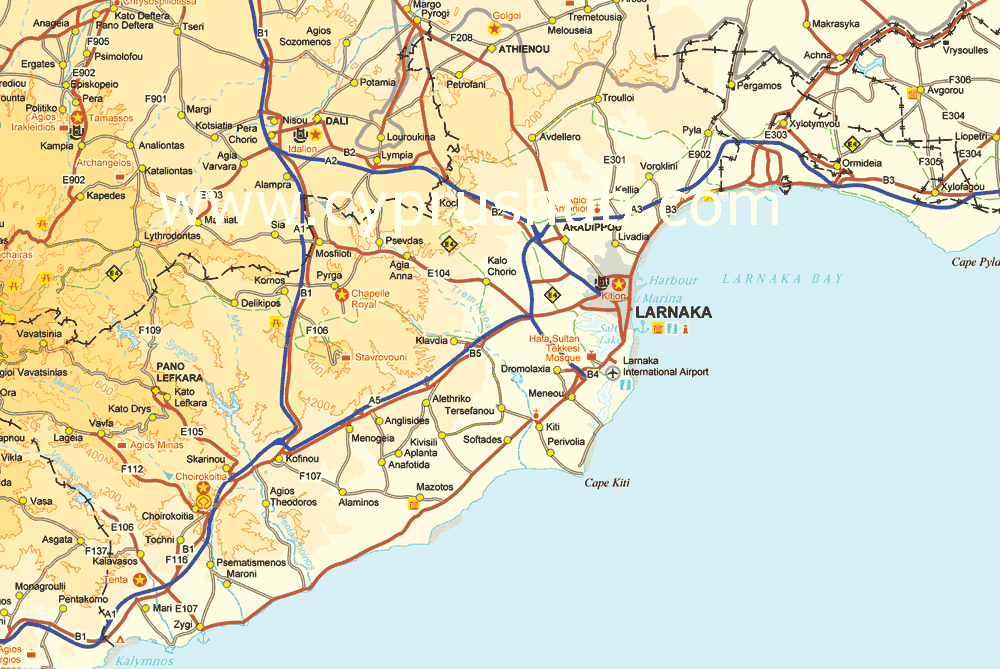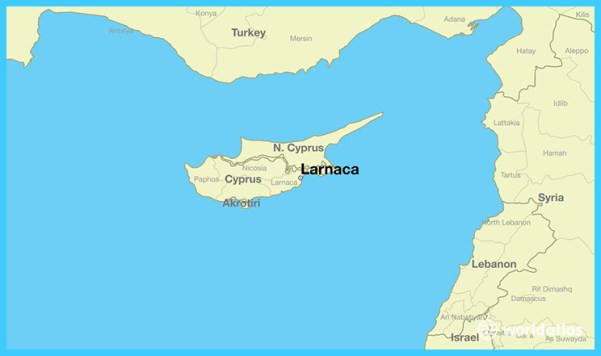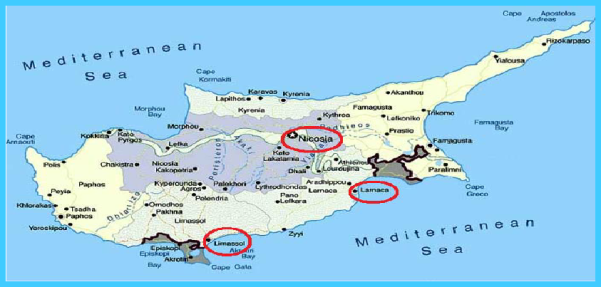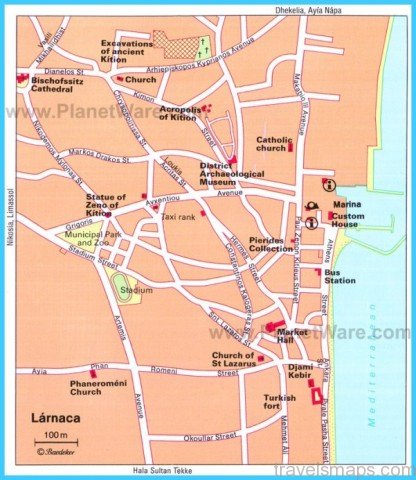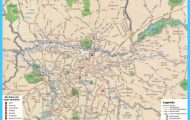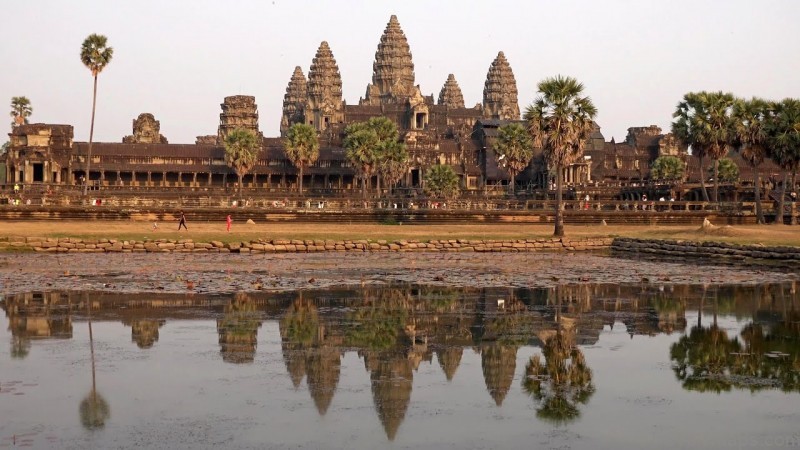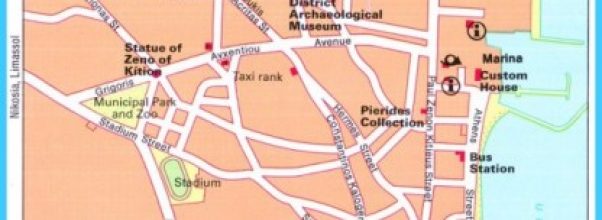
Hala Sultan Tekke
Kamares Aqueduct. When, during the 18th century, Larnaka suffered from a shortage of water, Bekir Pasha, the Ottoman governor of Cyprus at the time, constructed an aqueduct stretching from the Tremithos river, through the area north of today’s Kiti dam, and reaching the city of Zeno. The construction of the Larnaka aqueduct began in 1747 and was completed three years later, in 1750. The hewn limestone with which the aqueduct’s arches were built, were brought from the ancient settlement of Kitium. Today, the traveller passing by Kamares is impressed by the 33 arches still standing, each one of a different width.
The Marble Bust of Zeno close to the Municipal Gardens. is the only one in the city of Larnaka in which he was born in 334 B.C. Zeno, who lived about 72 years, spent his younger years dealing in trade and later moved to Athens and followed the teachings of Crates, Stilbo, Xenocrates, Pelemon and Diodorus Cronus of Megara. Since these philosophers belonged to different schools of thought, it is only natural that Zeno acquired a broadly based philosophical expertise. It seems that the Cypriot philosopher was influenced by Crates, Stilbo and Heraclitus, since his teachings reveal elements taken from all three: Crates’ cynicism, Stilbo’s stalwartness and Heraclitus’ austerity. At the age of about 40, he formed his own philosophical school in the Pikili Stoa which, because of its seat, became known as Stoicism. The reputation of the new philosopher soon attracted pupils from all over Greece. Stoicism also influenced great thinkers of the Roman Empire, such as Cicero, Marcus Aurelius, Epictitus, Seneca and others. Zeno lived a patient, sparse and modest life. Many anecdotes concerning the philosopher live to this day, through which he can be seen praising virtue, silence, kindness, beauty and moderation. His self-control was an example for imitation during classical times. As regards blabbermouths, the Cypriot philosopher used to say: “Nature has given us one tongue and two ears, so that we may hear twice as much as we say”. Zeno’s motto was to lead a virtuous life. It is virtue that brings about happiness.
The Bust of Kimon. The Greeks, the Athenians in particular, fought hard and long for the liberation of Cyprus from the Persian yoke. The culmination, however, of the relationship which Cyprus enjoyed with the Athenians was the death of Kimon, the great general, who, together with Anaxicrates left Athens in 450 B.C. in order to free Cyprus from the Persians. Having liberated the city of Marion, Kimon proceeded to Salamis and Kitium. At Kitium, however, either as a result of injury or sickness, he died, whereupon his comrades decided to keep the news of his demise secret. Albeit, upon leaving the island, the Greeks were granted a double victory, at Salamis, with the Phoenician fleet in the sea and the Persian armies on the land. It was this victory that gave rise to the well-known phrase, with reference to Kimon: “Even in death he vanquished”. The people of Larnaka, as proof of their love and adoration to the great general, erected a marble bust in his honour in 1927. The bust is on the Lanaka seafront, reminding all visitors, and especially the people of Larnaka, of the constant strife carried out by Greece in order to rid Cyprus of the Persian yoke.
Where is Larnaca, Cyprus? Larnaca, Larnaka Map Photo Gallery
Larnaka Fort, next to the sea and the well-known “Foinikoudes” was built, according to some writers, by the Turks in 1625. It seems, however, that it existed during the Venetians and was put to different uses following the Turkish occupation of Cyprus. The Fort of Larnaka has undergone so many changes and modifications by the Turks, the British and the Cypriot Government, that a reproduction of its initial appearance is next to impossible. Its shape, however, is square, with extremely thick walls, especially towards the sea. One can still see the few battlements, similar to those found on other Venetian forts. Above the main entrance one still sees a Turkish inscription. The spaces which were later turned into prison cells are on the ground floor. An external staircase leads you to the roof of the initial fort, where one can ascertain the thickness of the walls. Furthermore, huge earthen pots and stone anchors, discovered at Tekke and ancient Kitium, can be seen in the fort. In a room above the main entrance, one can see exhibits from the Swedish excavations at Tekke, the French excavations in Larnaka, as well as the excavations of the Cypriot Department of Antiquities.
Larnaca, Larnaka – road map and street view
MUSEUMS
The Archaeological Museum. In the limited space of the Museum are housed treasures from the entire Larnaka district. In one of the rooms are hosted findings, especially pottery, of the neolithic age, the bronze age as well as of the geometric, archaic, classical, Hellenistic, Roman, early Christian, and very few specimens of the Middle Ages. The early bronze age (2500 – 1900 B.C.), the middle bronze age (1900 – 1650 B.C.) and the late bronze age (1650 – 1050 B.C.) have plenty to show to the visitor.
Besides, the faience, ivory and alabaster objects, all imported, bear indisputable witness to the commerce and the international relations between Cyprus and different foreign countries. The second large room of the museum houses mainly statues made of limestone and marble. Here are exhibited men’s heads, feminine torsos, bearded heads, statues of veiled women, statuettes, the head of a wreathed youth and earthenware idols. In this room are also found marble tombstones and inscriptions.
The Pierides Museum. A spacious, two-storeyed building at Zinonos Kitieos street, in Larnaka, with the coat of arms and the flag of Sweden, attracts the passer’s-by attention. The entire edifice, built in colonial style, today houses the Pierides Museum. The archaeological collection comprising 2.236 objects, started by Dimitris Pierides, head of the family, in 1939. The prestige of the Pierides family, contributed to the arrival in Cyprus of the Swedish expedition between 1927 and 1931. Even Gustave Adolph the 6th, king of Sweden and personal friend of the Pierides family, participated in the expedition. Exhibits from the neolithic settlement of Choirokoitia, impressive red pottery of various shapes from the bronze age, specimens representative of the Mycenean period, earthenware statues of the Hellenistic and archaic period, very few Phoenician pottery, pottery of the Hellenistic and Roman periods, attic black and red ware, objects made of alabaster from the Hellenistic period, Roman glass objects, Byzantine pottery as well as some coats of arms belonging to the Lusignans are exhibited for the visitor. The visitor’s attention is especially attracted by the Roman glass objects as well as by the medieval pottery of the 13th and 14th centuries which are all rare and difficult to find.
Pierides Museum
The Natural History Museum. The first Museum of Natural History of Cyprus has been founded in the small public garden of Larnaka. In small rooms are exhibited embalmed birds of Cyprus, endemic as well as migratory, reptiles and colourful butterflies. Rather more representative is the collection of rocks. Quite remarkable are the fossils originating from different regions of Cyprus which witness millions of centuries of life in the small area covered by Cyprus. In an open space very close to the small rooms of the museum the visitors can see ducks, chickens, parrots and especially a moufflon, an animal which is representative and unique in the Pafos forest.
Maybe You Like Them Too
- The Best Places To Visit In North America For Christmas
- Faro Travel Guide: Map of Faro
- Mumbai Travel Guide For Tourists: Map Of Mumbai
- Travel to Budapest
- Thailand Travel Guide for Tourists: The Ultimate Thailand Map

